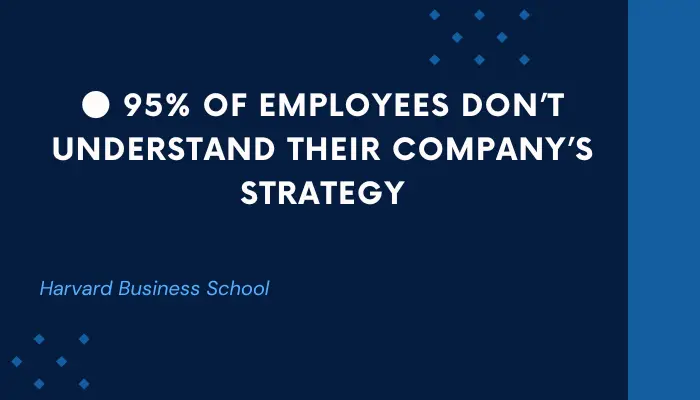Knowing the planning framework goals, helps you to efficiently use it in developing a perfect organization plan.
What are the goals of the planning framework?
The planning framework’s goals are to make the planning process more systematic and seamless. It outlines the steps that must be followed to obtain the plan and the purpose of each step. Following the planning framework will make the planning process easier and more accurate.

The purpose of the planning framework is to induce efficiency and effectiveness in the planning process. In this post, we will address the details of the planning framework goals, its importance, and its components.
💡 Helpful Statistics About Planning: ● Companies with written business plans grow 30% faster. ● Businesses with a plan are far more likely to get funding than those that don’t have a plan. ● 67% of well-formulated strategies failed due to poor execution. (HBR) ● 60–90% of strategic plans never fully launch. ● 48% of leaders spend less than a day on strategy each month. (HBS) ● 95% of employees don’t understand their company’s strategy. (HBR) ● 61% of executives feel they are not prepared for the strategic challenges. (HBR) ● 77% of successful companies translate their strategy into operational terms and evaluate it on a day-to- day basis. (Palladium)

Table of Contents
Explanation of the planning framework goals
Let’s dive deep into the concept of planning framework goals, but before that, let’s revise the words.
The planning framework’s goals are to make the planning process more systematic and seamless. It outlines the steps that must be followed to obtain the plan and the purpose of each step. Following the planning framework will make the planning process easier and more accurate.
Let’s break that down:
You can note from the words mentioned above that the planning framework has two main goals.
- To make the planning process systematic and seamless
- To outline the steps of creating a plan, also the purpose of each step
Now we will dissect each phrase in more detail in the following section. Let’s start
The systematic and organized planning process
The planning process should have a proper structure to formulate efficient plans. Organizations cannot work based on a plan that has no logic behind it. Hence, a systematic planning process is a wise option. It eliminates decision-making uncertainty and uses scientific methods to develop the plan.
How can one develop a systematic planning process? The systematic planning process is achieved by using the planning framework. What is the planning framework? The planning framework is a charter that tells the planner how to build a plan and also helps develop a plan easily.
By following a planning framework, the planner will follow a set of rules, so the chances of deviation are much less. The framework defines every step of the planning process. It also induces accountability in employees as it defines the role of every participant.
The purpose of the planning framework is to help you define goals, identify your weak points so you can improve, and figure out the procedures that help achieve the goals.
Outlines the planning steps
The planning framework goal is to outline how you should approach a plan. It maps out the steps of the planning process as well as the purpose of every action. The steps of a planning process are as follows:
- setting objectives
- define planning premises
- Evaluate alternatives
- Identify resources
- Select Plan
- Follow-up plan
The planning process’s first step is establishing the objectives and goals. The goals should align with the company’s vision. Objectives and Key Results is known as a framework that helps measure progress in the light of objectives.
The second step is to set the planning premises; it means making some assumptions about the future. The changes that can occur in the future in the external and internal environment. PEST planning frameworks help the planner see which factors can impact the business. PEST analysis uses scientific methods. Hence this is not just guesswork but supported by data.
Evaluation of alternatives is the third step of the planning process. The framework will help evaluate the options, which is the best to select. Though, every choice has some pros and cons. The planner will weigh them according to the framework and choose the best possible alternative.
Identify the resources of an organization so that the plan is developed accordingly. SWOT framework is very helpful in estimating strategic resources like the strengths and weaknesses of a business.
The planning framework also helps select the plan that is in alliance with the objectives. In addition, its purpose is to monitor and follow up on the plan to avoid any deviations.
Why is the planning framework important?
The planning framework is of paramount value because it creates coherence between the organization and the stakeholders. It ensures that the end goal of the organization and stakeholders is achieved.
Also, a framework keeps the employees motivated as it clearly states every employee’s role. When employees know their goals and tasks, they stay motivated because they focus on the activity to accomplish the goal. Hence keeping everyone and everything coordinated toward the same purpose.
The framework connects daily tasks with long-term goals. It also sets priorities for the employees and what needs to be done first. In addition, it monitors the progress of tasks and measures success objectively.
A framework is very important in accessing the competitiveness of the market. It analyzes the strength of the buyer as well as the supplier. It also demonstrates the effect of competitors’ strategies on your business. Additionally, it measures the opportunities and threats of the market. It analyzes the areas you are good at and where you can improve.
A planning framework helps understand the external factors of the business environment. It analyzes technological changes, political ups and downs, economic fluctuations, and sociocultural trends.
It is also vital in exploring growth opportunities. If you have a framework in place, you can easily make decisions regarding development of new product or entering a new market. You can increase the demand for your product or service and beat the competition.
Component of the Planning Framework
There are seven basic components of a planning framework which are stated below:
Goals
Every planning process starts with setting goals. These goals can be existing goals already in place, or these can be the goals you define as you move along the planning process. These goals are in accordance with the company’s vision and mission.
Objectives
Goals are broad, while objectives are more specific. Objectives should be attainable and realistic. Based on your goals, set a list of objectives. While listing the objective, consider your action plan. The action plan is how you are going to achieve those specific objectives.
Strategy
Strategy is basically your action plan. The steps or actions you will take to accomplish your specific objective, which in the long run, will attain those broad goals that you set in the beginning. These actions or steps are very well thought out. Spend a good time thinking about the activities that will take you closer to your goal.
Time frame
While setting the goals, you also need to set the time frame in which you will accomplish the goal, like companies usually set annual or quarterly goals. Setting the time frame keeps the employees motivated and gives them the push to attain their goals.
Responsible party
Once the goals and time framework are defined, defining who is responsible for what action is vital. It is the right time to delegate the task to each participant. The delegation will create a sense of accountability because employees will be aware of their job.
Outcome
You must measure the outcome after implementing the strategies and employees’ responsibilities. It is better to measure success in quantifiable terms. Key Performance Indicators allow you to measure results.
Evaluate
After measuring the success in the quantifiable term, you must evaluate the whole process. You assess the time frame, people responsible for completing tasks, resources, strategies, and outcomes. This way, you can understand the areas for improvement. You will see what has worked in your favor and what has not.
Conclusion
The purpose of the planning framework is to dig deep into the planning process and ensure to turn ideas into actions by following the planning steps.
The planning framework’s goals are to make the planning process more systematic and seamless. It outlines the steps that must be followed to obtain the plan and the purpose of each step. Following the planning framework will make the planning process easier and more accurate.
A strategic planning framework is important in determining the external and internal factors necessary for developing the plan. It also decides the market competitiveness and competitor threats the business faces so that the plan can be developed considering these factors.
If you are a planner, you must have a detailed know-how of planning framework to make an accurate plan easily.


